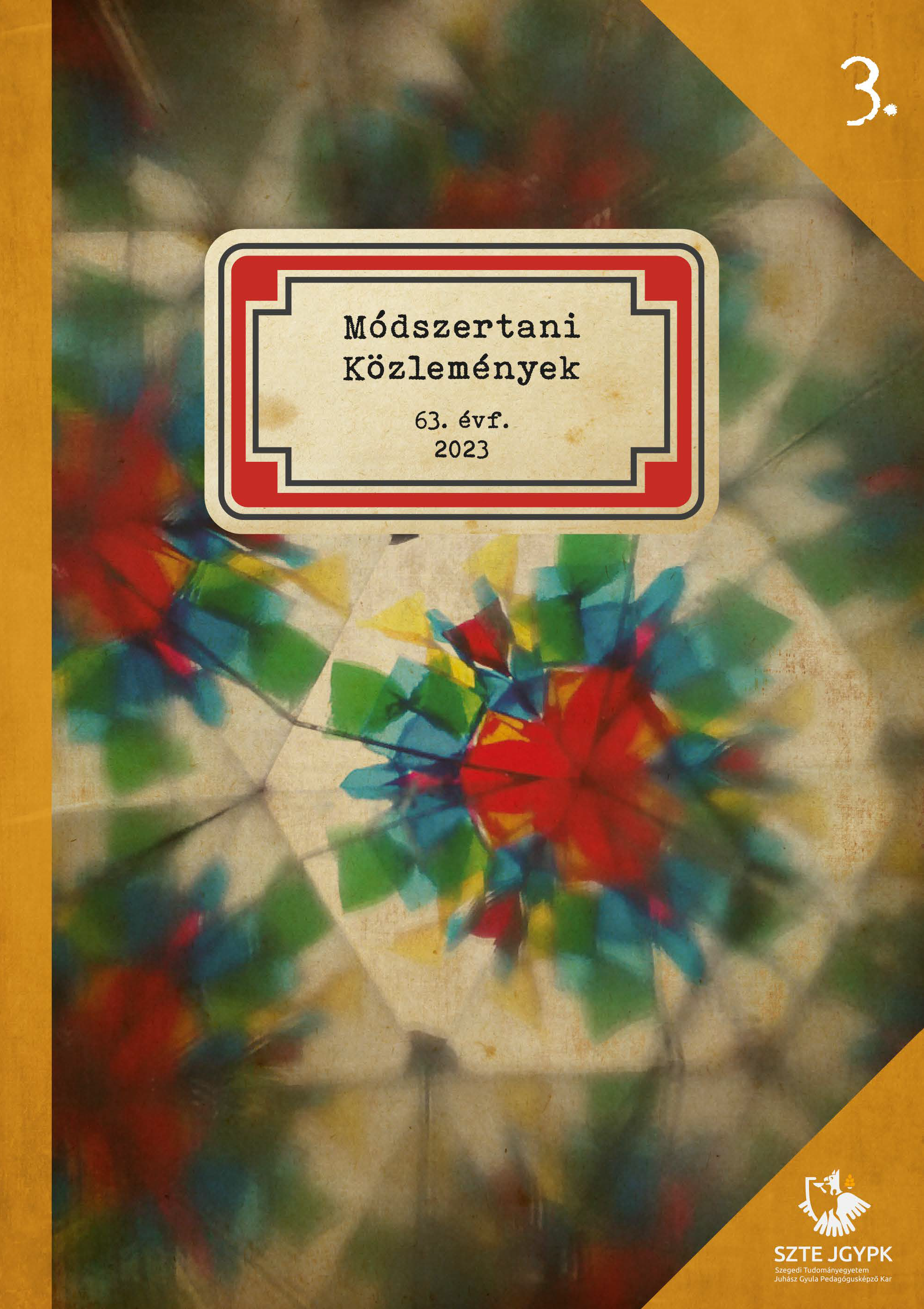Taboo topics and their appearance in contemporary Hungarian fairy tales
Main Article Content
Abstract
In my study, I map the taboo contents and phenomena appearing in contemporary Hungarian fairy tales. Using the method of triangulation, I investigated the issues of taboo in children’s literature with a qualitative research process, focusing on the availability of stigmatized content in specialized literature, as well as the concept, functions, and possible causes of the appearance of taboo – making an attempt to clarify conceptual contradictions. With the help of the interviews prepared for the research, the parent questionnaire and the content analysis, I mapped the choices of parents regarding children’s literary works, the main focus of which is dealing with educational situations considered delicate. Divided into areas, the thesis reviews the demand for storybooks dealing with taboo topics, as well as the demand for quality literature, as well as the adaptive formation and adaptation of book publishing. The presented problem areas can provide clues for the planning of future educational research.
Article Details
References
Barnowski-Geiser, Waltraut (2020): Apa, anya, pia. Magyar Máltai Szeretetszolgálat, Budapest.
Bartos Erika (2018): Születés. Móra Könyvkiadó, Budapest.
Balázs Imre József, Dragomán György, Egressy Zoltán, Erdős Virág, Grecsó Krisztián, Háy János, Kádár Annamária, Kiss Judit Ágnes, Kiss Ottó, Lackfi János, Mechler Anna, Szabó T. Anna, Tamás Zsuzsa és Tótth Krisztina (2021): Tesókönyv. Manó Könyvek Kiadó, Budapest.
Balázs Géza (2009): Nyelvi tabuk a médiában. In: Az Eszterházy Károly Főiskola tudományos közleményei (Új sorozat 36. köt.). Tanulmányok a kommunikációtudomány köréből= Acta Academiae Paedagogicae Agriensis. Sectio Communicationis (A médianyelv bulvárosodása). 76-80.
Bálint Ágnes (1971): Mazsola és Tádé. Holnap Kiadó, Budapest.
Csőgér Lilla (2022): Tabutémák megjelenése a kortárs magyar mesékben. Szakdolgozat. Kézirat. ELTE PPK Neveléstudományi Intézet, Budapest.
Czeigler Orsolya (2008): Az élet dolgai – Én? Te? – Mi! Saxum Kiadó, Kaposvár.
Fagerström, Grethe és Hanssom, Gunilla (1977): Peti, Ida és Picuri. Móra Ferenc Könyvkiadó, Budapest.
Finy Petra (2009): A tesó-ügy. Pagony Kiadó, Budapest.
Izard, Carroll E. (2007): Basic Emotions, Natural Kinds, Emotion Schemas, and a New Paradigm. Perspectives of Psychological Science, 2. 3. sz. 260–280.
Kádár Annamária (2012): Mesepszichológia: Az érzelmi intelligencia fejlesztése gyermekkorban. Kulcslyuk Kiadó, Budapest.
Kiss Judit Ágnes (2020): Babaróka kistestvére. Pagony Kiadó, Budapest.
Mérei Ferenc és V. Binét Ágnes (1970): Gyermeklélektan. Gondolat Könyvkiadó, Budapest.
Monchaux, Marie-Claude (1971): A sehány éves kislány. Móra Ferenc Könyvkiadó, Budapest.
Pacskovszky Zsolt és Rigler Ilona (2013): Hogyan élheted túl, ha minden a testvéred körül forog? Móra Könyvkiadó, Budapest.
Ranschburg Jenő (2006): Áldás vagy átok? Gyerekek a képernyő előtt. Saxum Kiadó, Kaposvár.
Révész Emese (2021): A gyerekeknek azért nem érdemes beszélni a halálról, mert úgysem értik. https://igyic.hu/tanari/a-gyerekeknek-azert-nem-erdemes-beszelni-a-halalrol-mert-ugysem- ertik.html?fbclid=IwAR0R7lkUwn7Up5RQHDPclyhYmN0A5TC7roqZ4LmpW1DL7wkO- AFOGHLGV9c (2022.02.09.)
Sántha Kálmán (2010): A trianguláció és az MTMM-mátrix kapcsolata a pedagógiai kutatásban. Iskolakultúra, 20. 7-8. sz. 54−62.
Schneider, Liane (2010): Bori és a kistestvér. Manó Könyvek Kiadó, Budapest.
Schweiz, Sucht (2020): Lurkó. Magyar Máltai Szeretetszolgálat, Budapest.
Varga Emőke, Pusztai Virág és Turcsányi Enikő (2021, szerk.): Tabu a gyermekirodalomban. Magyar Gyermekirodalmi Intézet, Budapest.

